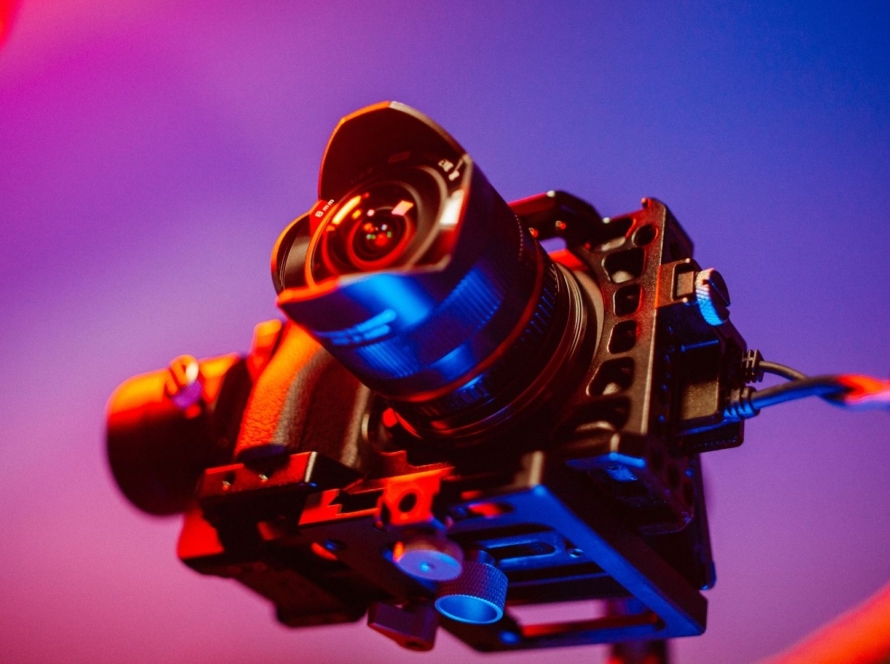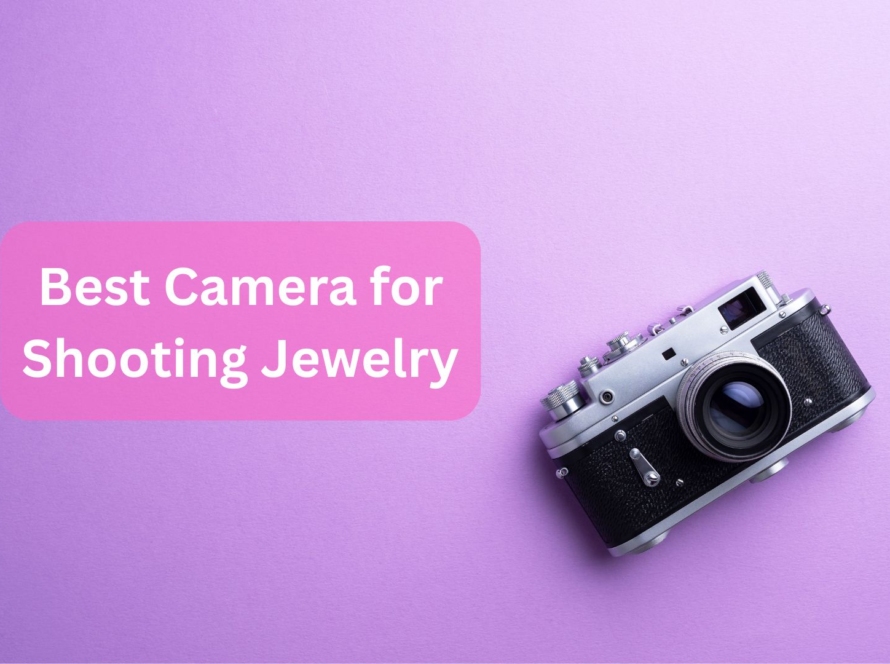Jewelry photography is a delicate art. Whether you’re capturing sparkling engagement rings, elegant necklaces, or handcrafted earrings, every detail matters. The shine of a diamond, the texture of gold, and the color of gemstones must come through clearly in your photos. But here’s the thing—without the right camera, even the best lighting and props won’t help much. That’s why investing in a good camera for jewelry photography is one of the smartest decisions you can make, whether you’re a hobbyist, a small business owner, or a professional photographer.
In this guide, we’ll walk you through the best cameras for jewelry photography, covering everything from budget-friendly models to top-of-the-line professional equipment. By the end, you’ll know exactly what kind of camera suits your needs and budget. If you’re thinking about enhancing your jewelry images even more, we’ll also share how our team at Jewelry Retouching Service can give your photos that polished, magazine-worthy look.
Why the Right Camera Matters in Jewelry Photography
Jewelry items are small and often highly reflective, which makes photographing them a bit tricky. Unlike portraits or landscapes, jewelry photography demands sharp focus, accurate colors, and the ability to capture minute details. A good camera for jewelry photography offers high resolution, great macro capabilities, and control over settings like aperture and ISO.
When you choose the right camera, you’re able to capture textures, brilliance, and dimension—all crucial elements that customers look for when shopping online. This is especially important for e-commerce platforms where your images act as the main sales pitch.
What Makes a Good Camera for Jewelry Photography?
Before diving into specific models, let’s quickly go over the essential features that make a good camera for jewelry photography:
- High Resolution: The more megapixels, the better. Jewelry photography benefits from the ability to crop and zoom without losing detail.
- Macro Lens Compatibility: Your camera should either come with or be compatible with a macro lens to capture tiny details.
- Manual Control: Automatic settings aren’t enough. You’ll need manual control over focus, aperture, shutter speed, and ISO.
- Good Low Light Performance: You might work with diffused lighting, so the camera should handle low-light conditions well.
- Accurate Color Reproduction: You want the colors of metals and stones to be exactly as they appear in real life.
Best Budget Cameras for Jewelry Photography
If you’re just starting out or running a small online store, don’t worry—you don’t have to break the bank. There are plenty of affordable cameras that offer the core features you need for high-quality jewelry photos.
One of the most talked-about entry-level options is the Canon EOS Rebel T8i. This camera has a 24.1MP sensor, and its compatibility with Canon’s macro lenses makes it a good camera for jewelry photography. It’s also user-friendly, offering intuitive controls for beginners. Pair it with a 100mm macro lens, and you’re all set to capture the fine textures and reflections in jewelry.
Another solid option is the Nikon D3500. This DSLR is often recommended for beginners, and for good reason. It’s affordable, lightweight, and comes with a 24.2MP sensor. It doesn’t have as many bells and whistles as the more expensive models, but when used with a good macro lens, it delivers excellent detail and clarity.
If you prefer mirrorless cameras, the Sony Alpha a6000 deserves a mention. It offers a fast autofocus system and a 24.3MP sensor, which is quite impressive for its price range. Plus, its compact size makes it perfect for tight studio spaces. When paired with a Sony 30mm macro lens, it becomes a surprisingly good camera for jewelry photography, especially for those new to the craft.
Mid-Range Cameras for Growing Jewelry Businesses
As your business grows, so should your gear. Mid-range cameras offer better build quality, more advanced features, and higher image fidelity. These cameras are great for semi-professional photographers or business owners ready to invest more in product photography.
The Canon EOS 90D is a standout model in this category. With a 32.5MP sensor and fast, accurate focusing, it lets you capture ultra-sharp images of small jewelry items. Its articulating screen is especially handy for shooting from different angles or setting up flat lays. This camera is widely used by product photographers and is undoubtedly a good camera for jewelry photography if you’re serious about presentation.
The Fujifilm X-T4 is another excellent mid-range choice. It’s a mirrorless camera that combines beautiful color science with a 26.1MP sensor. What makes it particularly suitable for jewelry photography is its film simulation modes and excellent dynamic range. With the XF 80mm macro lens, the X-T4 is more than capable of delivering crisp, professional results.
Also worth mentioning is the Nikon Z50, a mirrorless model that’s compatible with Nikon’s excellent Z-mount lenses. It features a 20.9MP sensor and great autofocus, making it user-friendly yet powerful enough for detailed jewelry shots. Combined with a macro lens, this is a good camera for jewelry photography for users looking for that perfect balance between performance and cost.
Professional Cameras for High-End Jewelry Photography
When it comes to commercial photography or working with luxury jewelry brands, only the best will do. Professional cameras offer unmatched detail, color depth, and flexibility in both studio and natural light environments.
The Canon EOS R5 is often considered the gold standard. With a massive 45MP sensor, in-body stabilization, and dual pixel autofocus, it captures every glint, cut, and reflection with stunning clarity. It’s compatible with Canon’s RF and EF lenses, which include some of the best macro lenses available. For luxury brands or commercial photographers, the R5 is a good camera for jewelry photography that delivers flawless results.
Then there’s the Sony Alpha 7R IV. With a jaw-dropping 61MP full-frame sensor, it’s ideal for large-format prints and extreme close-ups. Sony’s Eye AF and focus peaking features also help ensure your shots are razor-sharp. It’s widely used by professionals in fashion and product photography, and it’s without a doubt a good camera for jewelry photography at the highest level.
If you’re a Nikon loyalist, the Nikon Z7 II is a strong contender. This full-frame mirrorless camera features a 45.7MP sensor and produces images with incredible depth and accuracy. Paired with the Nikon 105mm f/2.8 macro lens, it delivers outstanding results, capturing every shimmer and sparkle with perfection.
Essential Accessories for Jewelry Photography
While choosing a good camera for jewelry photography is a top priority, the accessories you pair with it can significantly impact the final result. A camera alone can only do so much—things like lenses, lighting equipment, and tripods play a huge role in how professional your images look.
A macro lens is arguably the most important accessory. It allows you to shoot small subjects like rings and earrings at very close distances while maintaining sharp focus. Even if you have a high-end camera, you won’t be able to capture those tiny details without a macro lens. For Canon users, the EF 100mm f/2.8L Macro IS USM is a popular choice. Nikon users will benefit from the NIKKOR Z MC 105mm f/2.8 VR S. Sony photographers love the FE 90mm f/2.8 Macro G OSS lens. These lenses, when combined with a good camera for jewelry photography, produce sharp and vibrant images that require minimal post-processing.
Next is lighting. Even the best camera will struggle without proper lighting. Jewelry tends to reflect and refract light in unpredictable ways, so soft, diffused lighting is crucial. Light tents or lightboxes help minimize harsh reflections and distribute light evenly across your subject. Many photographers use LED panel lights or ring lights with adjustable brightness and color temperature to get the perfect setup.
Don’t forget about tripods. Jewelry photography often involves slow shutter speeds and narrow apertures, which means any camera shake can ruin your shot. A sturdy tripod ensures stability and consistency across your images. Look for one that allows you to shoot from overhead angles, especially for flat lays or catalog shots.
Another underrated accessory is a remote shutter release or camera app. Pressing the shutter button by hand can slightly move the camera and cause blur. Using a remote lets you trigger the shot without touching the camera.
All these accessories work together to help maximize the potential of a good camera for jewelry photography and ensure your setup is as professional as possible.
Editing: The Final Touch That Makes a Big Difference
Even with the best camera, lens, and lighting setup, raw photos often need some polishing. That’s where post-processing comes in. Editing allows you to fine-tune colors, remove dust or fingerprints, adjust reflections, and enhance the sparkle and clarity of your jewelry.
At Jewelry Retouching Service, we specialize in transforming good photos into stunning product images ready for e-commerce, catalogs, or advertising. Our expert editors understand the nuances of jewelry photography and apply techniques like background removal, shadow enhancement, shine correction, and gemstone color balancing to ensure your images stand out.
Let’s say you’re using a good camera for jewelry photography and your photos already look decent. Post-processing can elevate those images to a professional level—removing even the tiniest blemishes, aligning symmetry, and correcting lens distortions.
While you can do basic editing using tools like Adobe Lightroom or Photoshop, professional retouching services save you time and offer a higher quality finish, especially when you have hundreds of products to process.
Choosing the Right Camera Based on Your Needs
Now that you know about the different cameras and accessories, how do you choose the right one? It comes down to your goals, budget, and experience level.
If you’re new to photography and just starting a jewelry store online, you might want to stick to a budget-friendly option like the Canon EOS Rebel T8i or the Nikon D3500. They’re easy to use and still provide excellent image quality when paired with a macro lens.
If you’ve been in the game for a while and want to level up, the Canon 90D or the Fujifilm X-T4 offers more control, higher resolution, and better color science. These are ideal for small business owners or semi-professionals who want consistency and quality.
And if you’re a professional photographer or working with luxury brands, then nothing beats the performance of a full-frame camera like the Sony A7R IV or Canon EOS R5. These high-resolution beasts will make your jewelry look like it’s ready for a magazine cover.
Whichever option you choose, make sure it’s a good camera for jewelry photography that matches your workflow and vision. There’s no one-size-fits-all, but with the right information and tools, you can make a confident choice.
Final Thoughts: Your Photography Journey Starts Here
Jewelry photography isn’t just about clicking a button—it’s about telling a story through images. Whether you’re showcasing a diamond’s sparkle, the texture of handcrafted silver, or the elegance of pearls, your camera needs to capture every detail flawlessly.
Investing in a good camera for jewelry photography will pay off in more ways than one. Better images lead to more engagement, higher conversions, and a stronger brand image. Whether you’re operating on a tight budget or looking for professional-grade tools, there’s a perfect camera setup out there for you.
But remember—great images don’t end with the camera. Professional editing can take your product photography to the next level. At Jewelry Retouching Service, we’re here to help you turn your raw shots into polished masterpieces. Our expert team handles everything from background cleanup to complex retouching, giving your jewelry images a competitive edge.
So go ahead—pick your camera, set up your studio, and let your creativity shine. And when you’re ready to polish your work to perfection, we’re just a click away.


